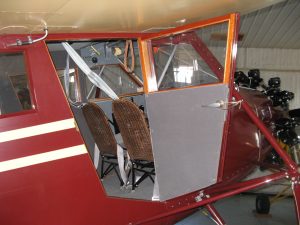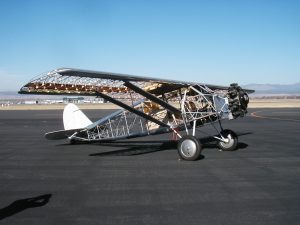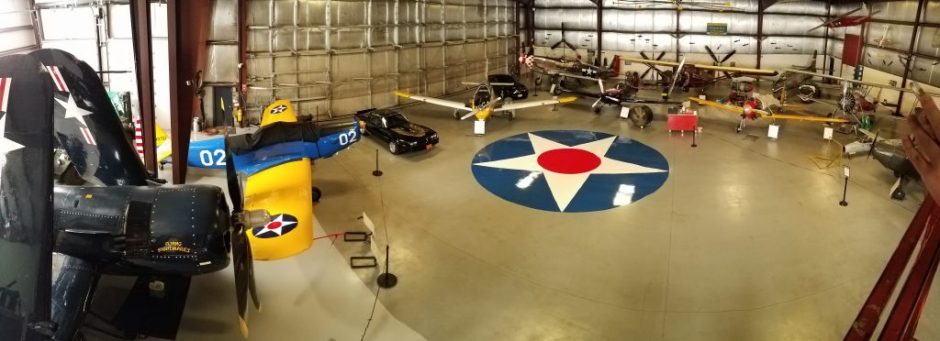



MANUFACTURER: Stinson Aircraft Corporation.
Stinson Aircraft had introduced their large high-winged six-seat SM-1 Detroiter in 1927. The SM-1 was sold successfully to airlines and other commercial operators, but it was too large to appeal to private owners.
Stinson therefore redesigned the aircraft with shorter span wings, shorter fuselage and a choice of less powerful engines as the SM-2 Junior. The aircraft was a strut-braced high-wing monoplane with a sturdy outrigger undercarriage which was braced against the wing support struts and the initial 110 h.p. Warner Scarab engine was normally left uncowled. The first SM-2 flew in mid-1928 and deliveries commenced that year. Later versions of the SM-2 had higher-powered engines of between 165 h.p. and 225 h.p.
The design was further developed to produce the more powerful and heavier SM-7 and SM-8models which were full four-seaters and these were also used by commercial firms. The Junior R of 1932 had a deeper fuselage and a low-set stub wing to mount the undercarriage and wing struts.
The first of the Junior series was built at Stinson Aircraft Corporation’s Detroit factory in April of 1928.
Designer: William Naylor,
Production run: 1928 to 1931.
While designed for private use, many Juniors were used in air taxi service and the first models placed nationally in various flying contests.
A total of 321 Juniors were built, of which 27 survived in 2001 and several of these were airworthy in private hands.
Stinson SM-2AA Specifications
Year of First Flight 1929
Number Built 22
Original Price $8500
Certification ATC 145, Group 2-73
Useful Load 1180 lb
Span 41 ft 6 in
Length (overall) 26 ft 4 in
High Speed 115 mph
Cruise Speed 97 mph
Landing Speed 47 mph
Range 580 sm
Powerplant Wright J-6 (165 hp)
Fuel Consumption 13.5 gph
Sponsored by George Alarm Company Springfield, Illinois 217-525-1335
